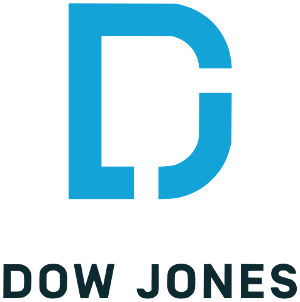Let's Build a Diversified Stock Portfolio
This site utilizes Google Analytics, Google AdSense, as well as participates in affiliate partnerships with various companies including Amazon. Please view the privacy policy for more details.
You may have heard that, if you’re investing in stocks, you need to have a diversified stock portfolio. But what does that even mean? It means to own a variety of multiple stocks.
But that’s just rewording the original statement. So, exactly what does that mean?
Let’s try building our own diversified stock portfolio.
First, we’ll buy some stock in GM.
 General Motors - GM
General Motors - GM
That’s just one stock, which, being one stock, isn’t very diverse.
Let’s buy another stock, say, Ford.
 Ford - F
Ford - F
Industries / Sector
There’s a problem with these two stocks. Yes, together, they’re more diverse than each by its own. But they’re in the same industry - automotive.
We want to buy stocks in different industries (also known as sectors).
Examples of different industries include automotive, healthcare, financial services, energy, and retail.
So let’s buy some McDonald’s, and maybe some Walgreens as well. Two different stocks that are in two different industries, neither of which is the same industry as Ford or GM.
 McDonald’s - MCD
McDonald’s - MCD
 Walgreens - WBA
Walgreens - WBA
Geographic Location
Our portfolio is getting more diverse - we have four different stocks across three different industries: Ford and GM in the automotive industry, McDonald’s in the restaurant industry, and Walgreens in the healthcare industry.
But there’s another problem. All of our stocks are US-based companies - our stocks are dependent on the US economy.
Let’s venture into other parts of the world. First, let’s buy stock in Honda.
 Honda - HMC
Honda - HMC
Oops. I mean, it’s not a bad decision, Honda’s definitely not a US company.
But it’s in the same industry as Ford and GM - two stocks in which we are already invested.
Ok, let’s try again. This time, we’ll buy stock in Sony. They’re not the US, and we don’t have anything in the electronics industry yet.
 Sony - SNE
Sony - SNE
Let’s buy something non-US and non-Japanese as well. Perhaps something on the other side of the word - BP. BP, which stands for British Petroleum, is, as its name suggests, based in London, England.
 British Petroleum - BP
British Petroleum - BP
Age
Ok, now we have seven stocks across five industries and three countries. How can we get any more diverse than that?
Let’s look at what they all have in common.
- Ford, founded 1903.
- GM, founded 1908.
- McDonald’s, founded 1940.
- Walgreens, founded 1901.
- Honda, founded 1946.
- Sony, founded 1946.
- BP, founded 1908.
They’re all fairly old, well-established companies.
We should add some younger companies.
Let’s buy some stock in Amazon - established in 1994.
 Amazon - AMZN
Amazon - AMZN
And Twitter - yes, you can buy stock in Twitter. They were established in 2006.
 Twitter - TWTR
Twitter - TWTR
The Numbers!
Industry, location, and age are just a few ways to express diversity among stocks.
Other ways include stock price.
There’s also the number of stocks available.
Then there’s market capitalization - or market cap - which is the stock price times the number of stocks available.
There’s also the price-to-earnings ratio - stock price divided by earnings per share or market cap divided by earnings.
There’s enough of these quantitative measures to make anyone’s head spin. There has to be an easier way!
Make it Easy - Index funds!
There is an easier way - and it’s called index funds.
An index fund is a type of mutual fund that tracks a particular stock index.
A mutual fund is a professionally managed investment that pools money from many investors to purchase a variety of stocks.
A stock index is a list of stocks with either similar or dissimilar characteristics.
Therefore, anyone who invests in an index fund invests in every stock in that index.
What indexes are there?
Probably the most well-known stock index, The Dow Jones, tracks only 30 stocks. That’s more than the nine stocks we chose earlier, but the Dow Jones isn’t known for its diversity.
 The Dow Jones
The Dow Jones
Another well-known stock index, the S&P 500, tracks - you guessed it - 500 different stocks. And it is well diversified.
Going beyond the S&P 500, there’s such a thing as a total stock market index, tracking enough stocks to make 500 stocks look like not that much.
But you can’t invest directly in an index, you have to buy into an index fund.
One of the most popular - and first - companies to offer index funds is the Vanguard Group.
 The Vanguard Group
The Vanguard Group
Vanguard offers, among others, the following funds:
- Vanguard 500 Index Fund (VFINX, VFIAX) which has 507 stocks.
- Vanguard Total Stock Market Index Fund (VTSMX, VTSAX) which has 3628 stocks.
Vanguard has had a lot of success with their index funds, so much that other companies have followed suit.
Fidelity, another popular investment company, has equivalent funds:
- Fidelity ® 500 Index Fund (FUSEX , FUSVX) which has 508 stocks.
- Fidelity ® Total Market Index Fund (FSTMX, FSTVX) which has 3363 stocks.
 Fidelity Investments
Fidelity Investments
Many other investment companies have index funds now, too.
Conclusion
We initially tried to make our own diversified stock portfolio - and we did okay. We had nine stocks, young and old, across several different industries around the globe. We then found out there’s an easy way to buy a variety of stocks - index funds.
So, if you invest, don’t worry about creating the perfect diversified portfolio - just invest in index funds!
Check out Fidelity’s website or Vanguard’s website if you want to invest in index funds.
Alternatively, if you want to invest in stocks, I suggest Robinhood for fee-free buying and selling. Use my Robinhood Referral Link to receive a free stock!
3 comments for Let's Build a Diversified Stock Portfolio
Leave a Reply

Index fund is the way to go. I also own some stock through my employer’s ESPP and can’t help but hold onto it. Maybe it’s tunnel vision, and the past is no indication of the future, but with 20% average returns it’s tough to not hold onto it.
Reply to This Thread
I primarily invest in index funds, but hold several direct stocks too. I will say the trade war talk this year hasn’t been helpful in the most recent months on many of my individual positions, but my index funds have had a healthy 2018 for the most part.
And, they’re less maintenance than checking the headlines each week for each individual stock position to look for scandals, lost contracts, hostile takeovers, etc.
Reply to This Thread
In the past, I have owed a few different individual stocks. Currently, I just invest in funds. I am not opposed to investing in individual securities. It takes more time and research than simply using a few index funds. It can be rewarding, but also more risky.
Reply to This Thread